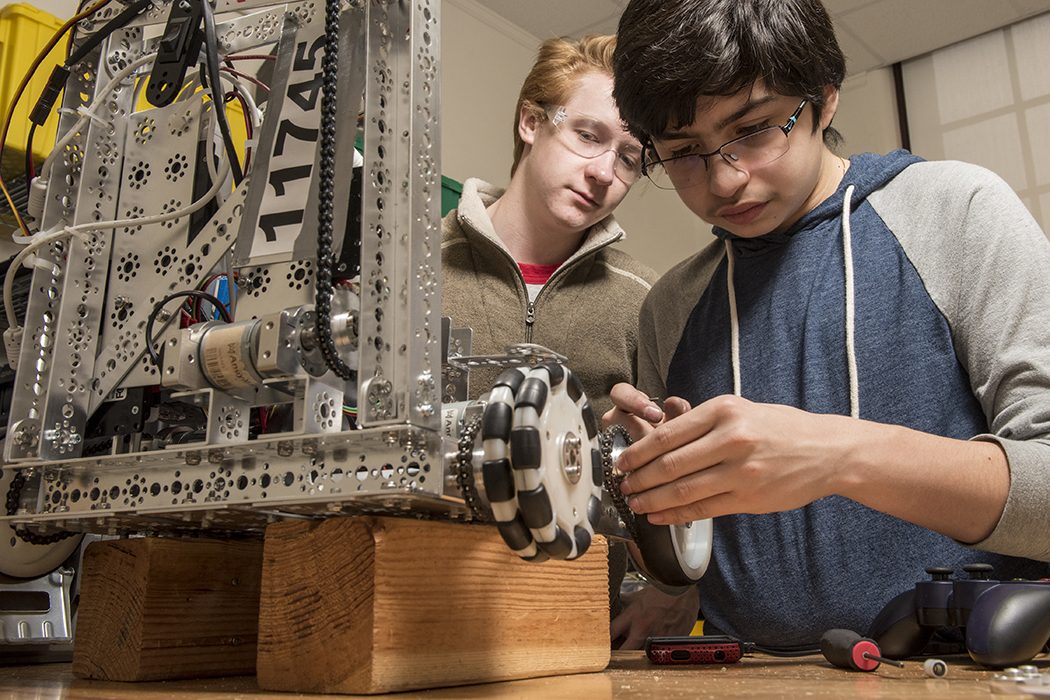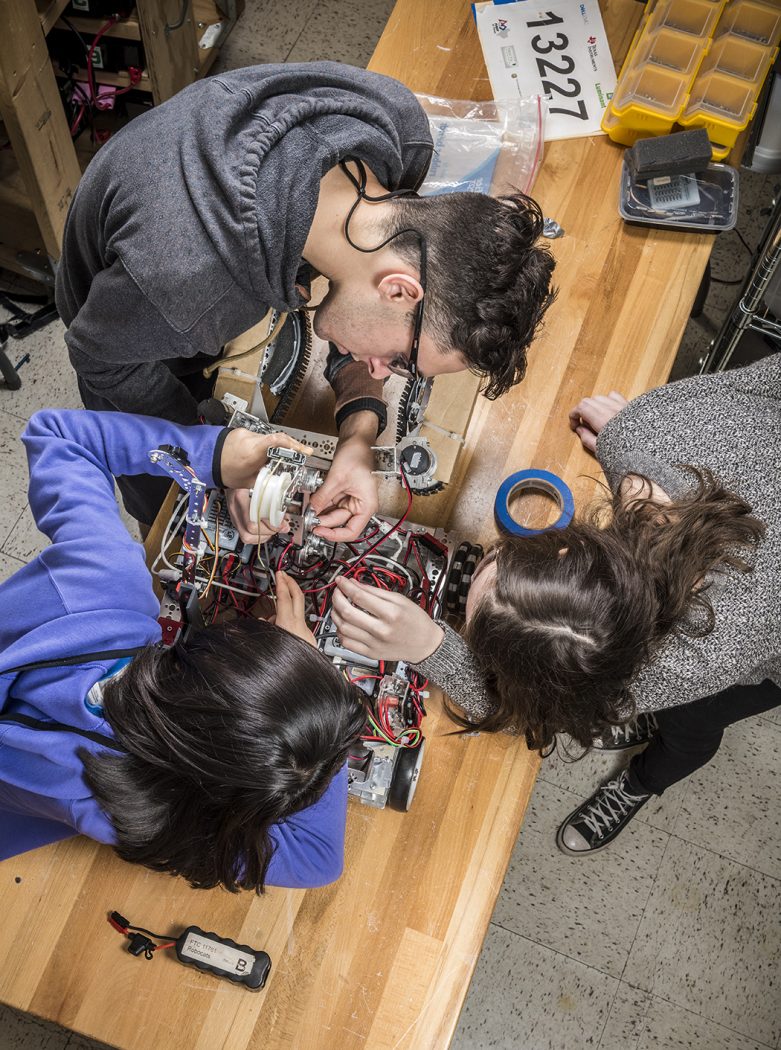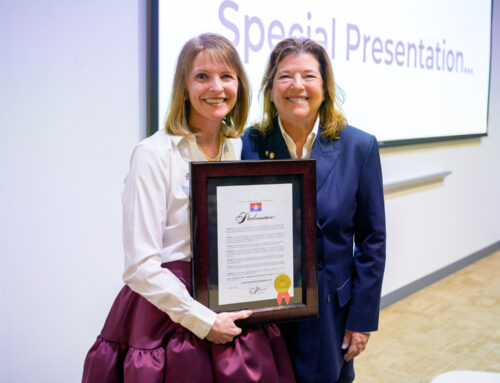
Will Hammond and Abraham Anguiano make adjustments to their robot in preparation for a competition. (Photos by Danny Fulgencio).
Engineering Success
It’s Saturday at 9 a.m., and while most high school students are enjoying a lazy morning, dozens more are clamoring to get back into the classroom.
They aren’t studying for a standardized test or listening to a lecture; they are preparing for an international competition where teams of students write computer code, operate power tools, build electrical circuits, create a business model and document their progress.
Sherrina Hoffnagle, a senior who joined Woodrow Wilson High School’s robotics team this year, is among them. Not only is she a member of the school’s first female robotics team, but she also is one of the first hearing-impaired students to participate. Being on the team has changed the way she sees school and her future.
A sign language interpreter accompanies Hoffnagle and the other hearing impaired students to all robotics activities. “I’ve never been on a team before, and it has helped me branch out,” she says. “I never had the guts to join because I felt like I could never connect because I was hard of hearing.”
At Woodrow, a regional home for deaf education, deaf students study alongside other students. Robotics coaches Brandon Carver, Terry Tolleson, Daniel Garrison and Micah Hill ensure the team is inclusive.

Skylar Linker and Andrea Goodart work with Archer Hasbany in the robotics lab. (Photo by Danny Fulgencio).
The squad, known as the Robocats, formed in 2012 with three students and Carver, a passionate engineering teacher. Today, dozens of students on five teams compete in several competitions throughout the year. They won a state championship last year and are expanding their reach beyond the traditional science, technology, engineering and mathematics demographic.
“Robotics is not just about robots,” says Taylor Vu, the 10th-grade captain of the female team. “It teaches us to do skills we need in other jobs, like public speaking, communicating, writing and photography.”
Vu didn’t have coding or building experience when she joined. But since older members mentor younger ones, she learned how to code and found an aptitude for building things before becoming a captain.
Kyle Davis, a senior, is the captain of another Robocats team. Leadership is intentional and essential. “I help the others grow in the environment and set the example for people after,” he says. “I don’t want to set a bad example for people in the long run.”
Hoffnagle realized she didn’t have to be a computer whiz to be a part of the team. “Robotics isn’t something you have to be smart to join,” she says. “They will teach you, and I really liked that. Now I encourage other deaf ed students to join.”
Female robotics teams are rare at tournaments. When Vu walks in with her team, they stand out. “I look forward to it,” she says. “They look at us and have low expectations. Then we show up and blow their minds and put them in awe. It is the greatest feeling.”
The girls team advanced to the playoffs at its first tournament.

Senior Sherrina Hoffnagle and junior Josef Hopfer are hard at work on a Saturday morning. (Photos by Danny Fulgencio).
At competitions, each team receives a scenario and designs a robot to complete several tasks. This may include climbing towers, stacking boxes, shooting balls or any number of actions. Community volunteers and teachers with robotics knowledge assist the teams three to four times a week outside of school hours throughout the year.
Students write code and maneuver the robot with a remote control, accruing points by completing different actions. The teams also compile a notebook documenting their process and how they would market the robot.
Teams spread the word by volunteering at local elementary schools and helping their robotics programs. Canyon Kidd, a junior captain, organizes the volunteers who have worked with Stonewall Jackson, Lakewood, Robert E. Lee and Mount Auburn elementary schools.
“We bond as a team and talk about ways we can help the schools,” Kidd says. “The best way to learn something is to teach it.”
The robotics team also helps spread the word about causes with worldwide impact, and they have partnered with an organization called Water of Life to raise money and provide clean water in developing countries.

Photos by Danny Fulgencio.
While other schools have labs dedicated to robotics, Woodrow’s team squeezes into tightly packed closets and engineering classrooms and trains with their robots on a hallway course that has to be built and packed up each day.
But the school’s new addition, which is set to finish at the end of the next school year, will have 3,500 square feet of space for science and technology, including robotics courses and collaborative workspace. Robotics coaches even helped plan the space with the addition’s architects.
A 2014 Brookings Institution study says that there is a scarcity of specific, high-value STEM skills in this country, but robotics helps prepare students to fill those roles.
Unlike sports, which has limited chances for students to graduate and go pro, robotics can result in multiple opportunities. Garrison says that several Robocats alumni major in related fields then return to mentor the team. “If you go down this trail,” he says, “100 percent of these kids go pro.”





